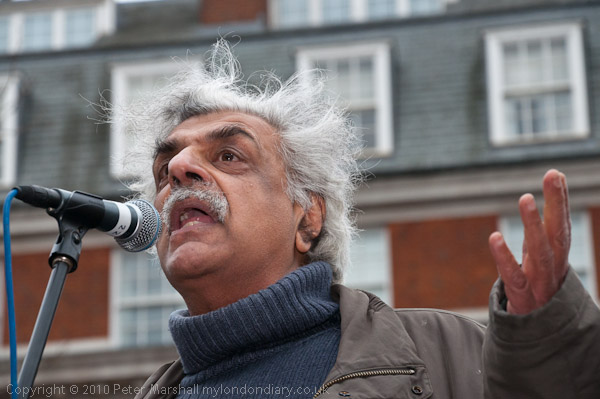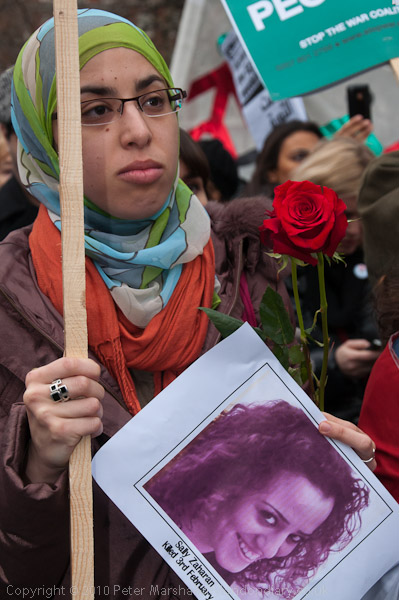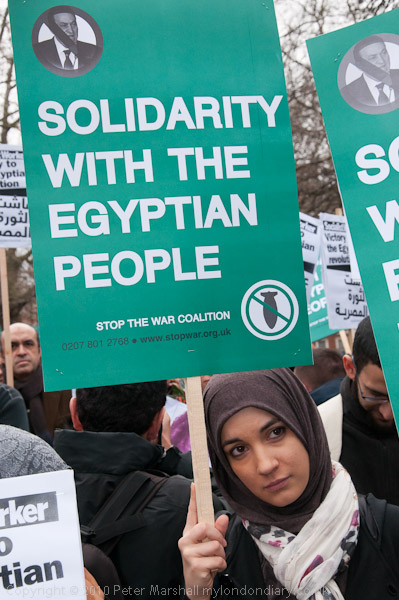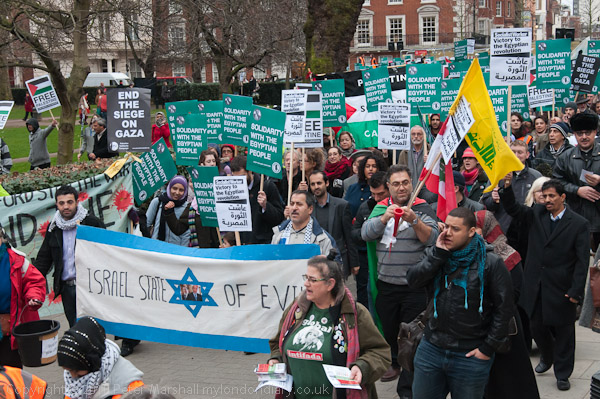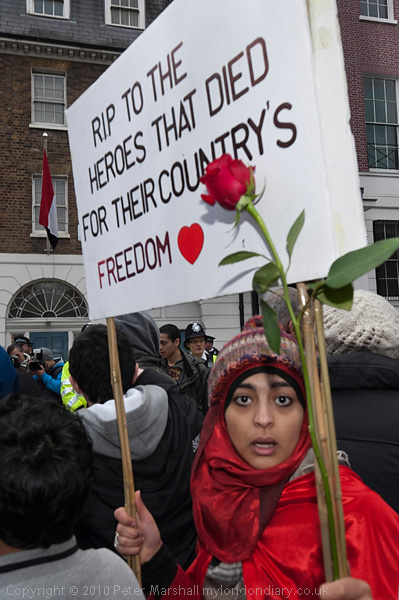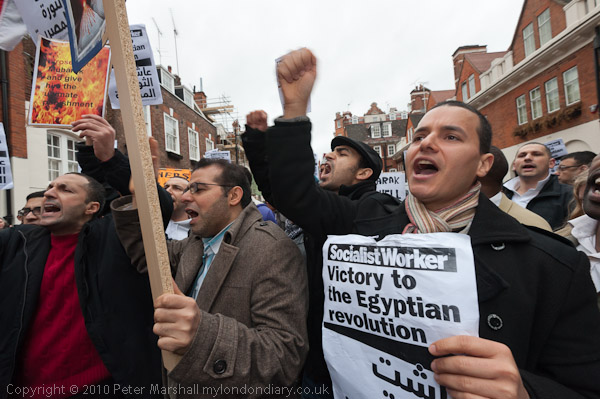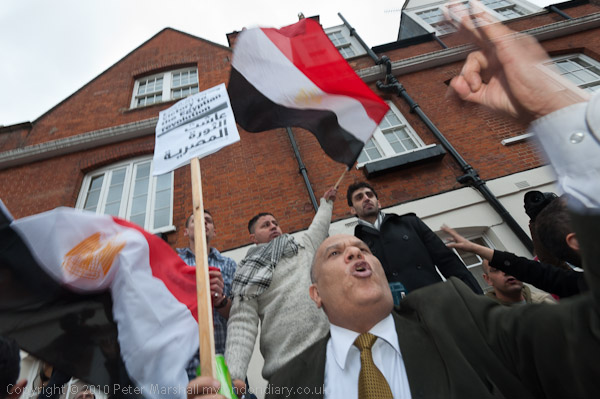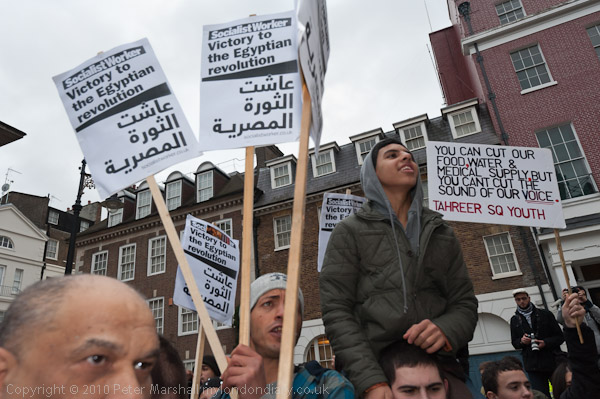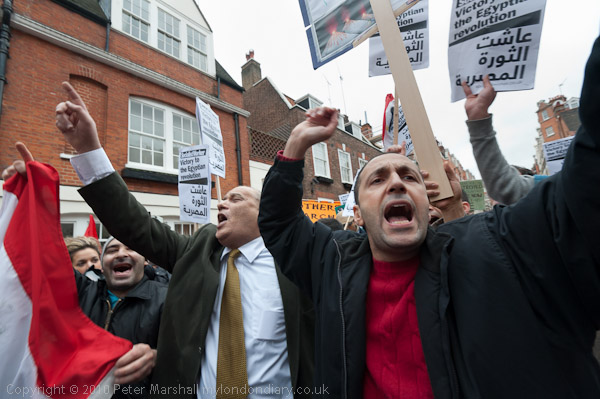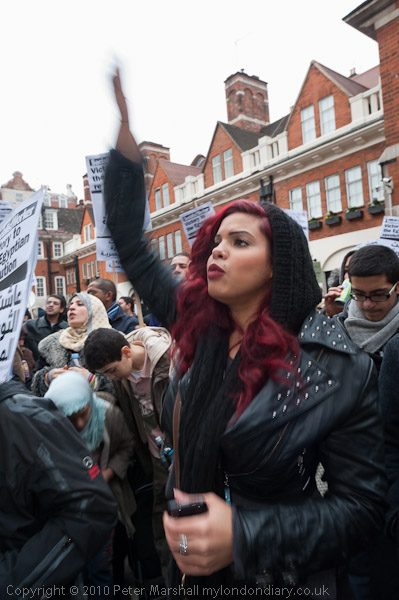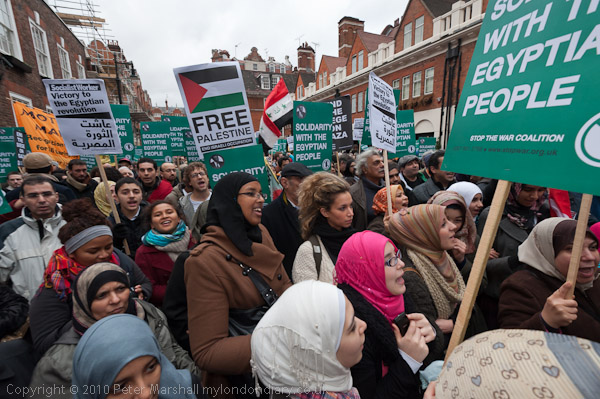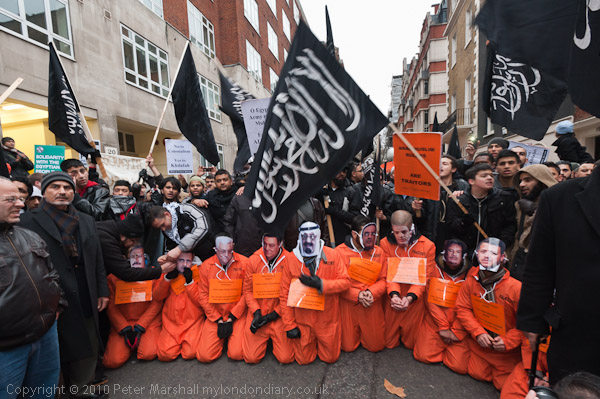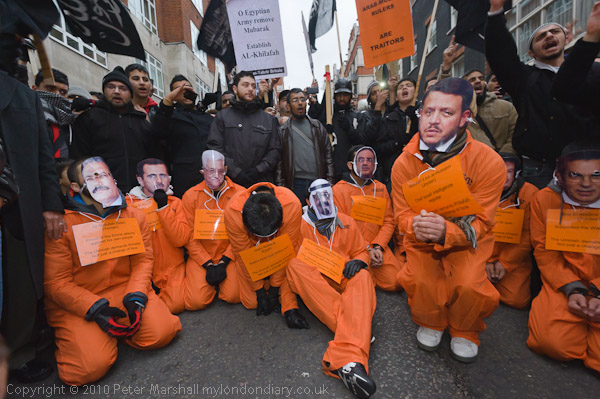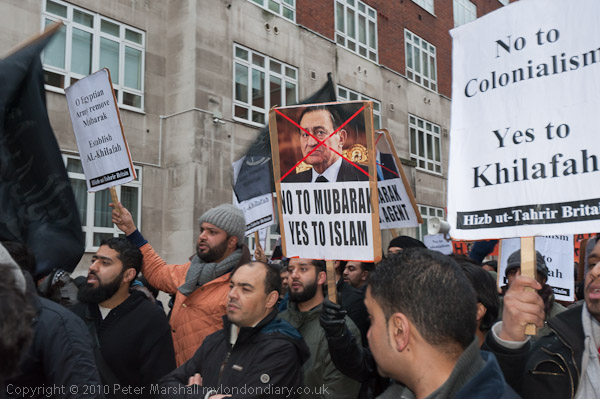Refugees, Sharia and Islamophobia: In 2000 the UN June General Assembly declared that June 20th every year is World Refugee Day on which, as the UNHCR web site puts it, ‘the world celebrates the strength and courage of people who have been forced to flee their home country to escape conflict or persecution. The 2023 theme of World Refugee Day is “hope away from home.”’
Back in 2010 it was celebrated with parades including one in London. Also on Sunday 20th June there was a rally by One Law For All calling for an end to Sharia and other religious laws, opposed by a small group of Islamic extremists, who were opposed by Islamophobic EDL supporters, in turn opposed by largely Asian East Londoners.
Umbrella Parade for Refugees – Whitehall to Geraldine Mary Harmsworth Park.
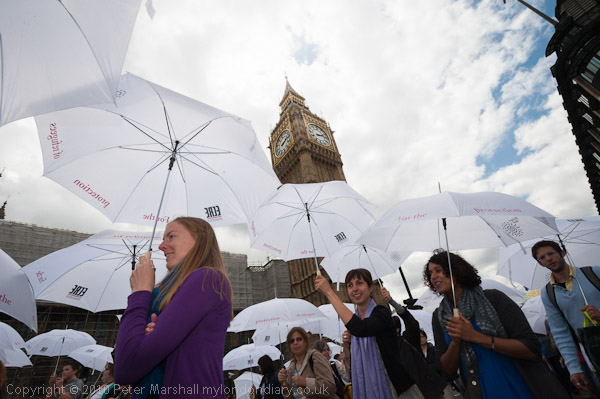
The London Umbrella Parade for refugees was organised by a partnership of groups including Amnesty International, British Red Cross, Oxfam, Refugee Action and Student Action for Refugees working with ECRE, the European Council on Refugees and Exiles, and the United Nations High Commissioner for Refugees.
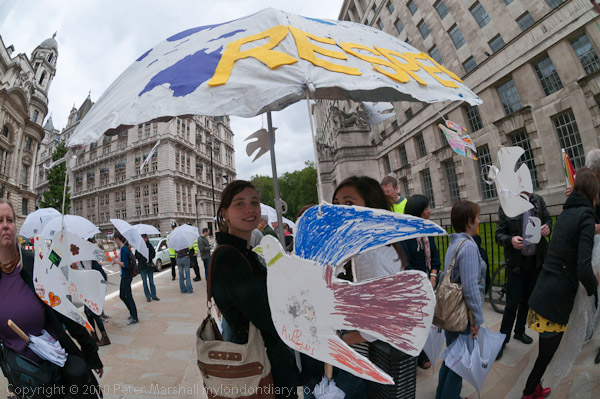
The umbrella was “a symbol of care and shelter, representing our proud tradition of offering safety to those in need of international protection,” a tradition that was then clearly under threat from the UK Borders Agency, with forced deportation flights in which refugees are returned to an uncertain future in Iraq, with beatings on the flight and on arrival.
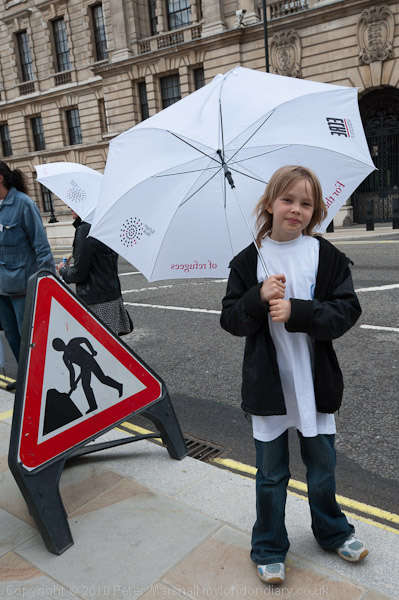
Since then we have seen successive Home Secretaries racheting up increasingly racist anti-refugee policies, now clearly and deliberately flouting international laws. The UK once had proud tradition and well-deserved reputation for upholding human rights, playing a leading role in establishing these human rights laws it is now breaking.
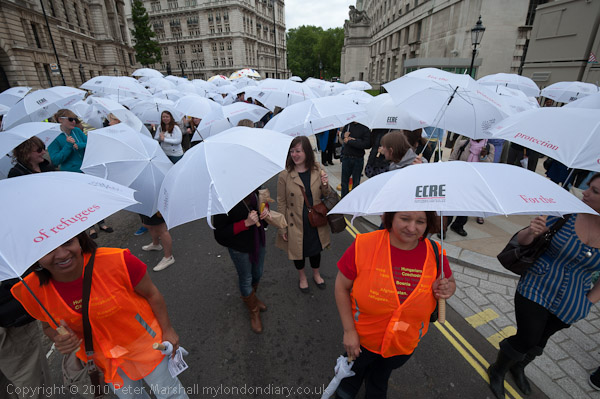
IN 2010 I wrote “Competition between the political parties to be even tougher on immigration and appease the right-wing press have serious eroded the chances of refugees and asylum seekers receiving humane treatment and proper consideration in the UK.” Things have travelled much further only this inhumane path since then.
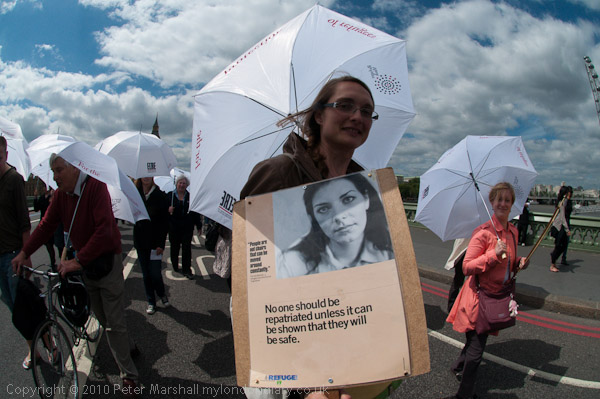
I walked with the campaigners from the Defence Ministry in Horseguards Avenue down Whitehall, past the Houses of Parliament and across Westminster Bridge. The march ended with a picnic in Geraldine Mary Harmsworth Park outside the Imperial War Museum. The start and finishing places were chosen appropriately as most refugees and asylum seekers are a result of war.
More pictures at Umbrella Parade for Refugees.
No Sharia – One Law For All – Whitehall
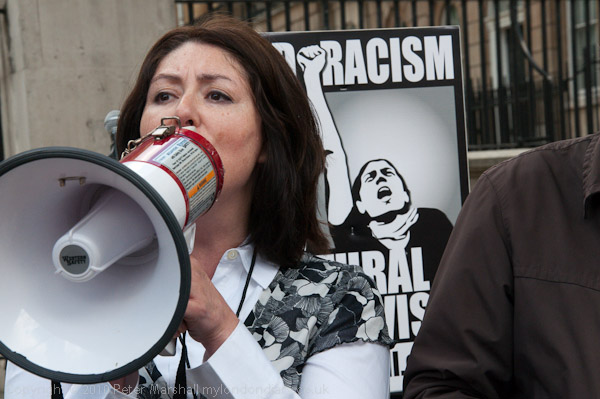
One Law for All campaigns against Sharia and religious arbitration in the UK, Iran and across the globe. They say these religious laws are discriminatory against and promote violence against women and have no place in the 21st century.
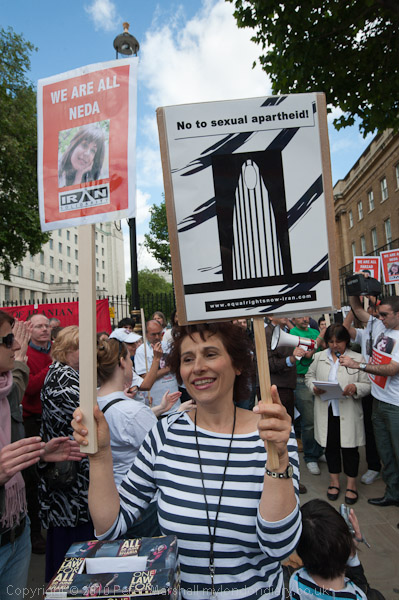
They want to end “religious laws and theocracy and promote secularism and the separation of religion from the state, education, law and public policy as a minimum precondition for the respect of human, women and LGBT rights.”
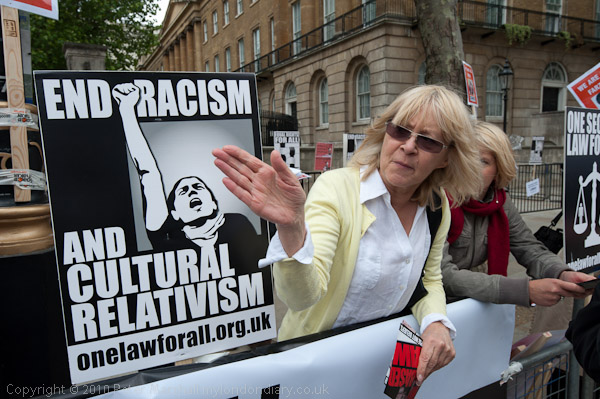
They have have campaigned for an end to Islamic regimes in Iran and Afghanistan, and have recently been involved in the Woman, Life, Freedom protests in London and elsewhere, promoting the Woman, Life, Freedom Charter.
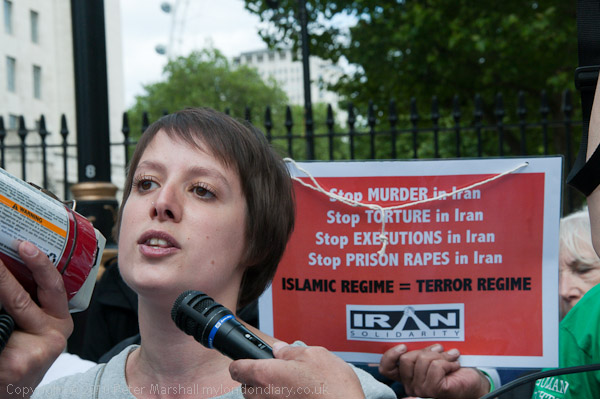
Their rally opposite Downing St on 20th June 2010 came on the anniversary of the the killing of Neda Agha-Soltan in Iran, and after the rally the several hundred taking part marched to the Iranian Embassy in Kensington.
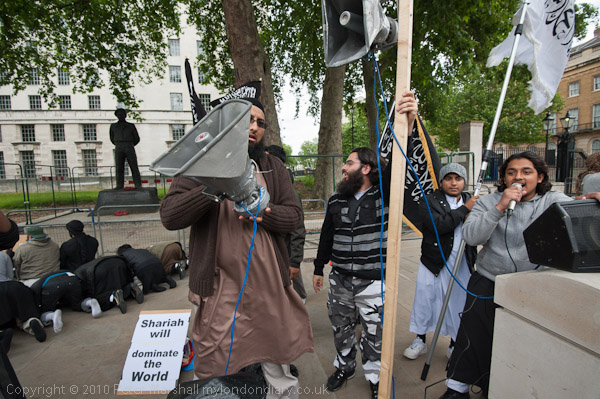
A short distance away were a group of mainly young Muslim men dressed in black and holding posters and flags. The called themselves ‘Muslims Against the Crusades’ or ‘Muslims Against Crusaders’ widely thought to be a reincarnation of the banned ‘Islam4UK’ (itself a relaunch of the banned Al-Muhajiroun.) One of their banners proclaimed ‘Sharia Will Dominate The World’.
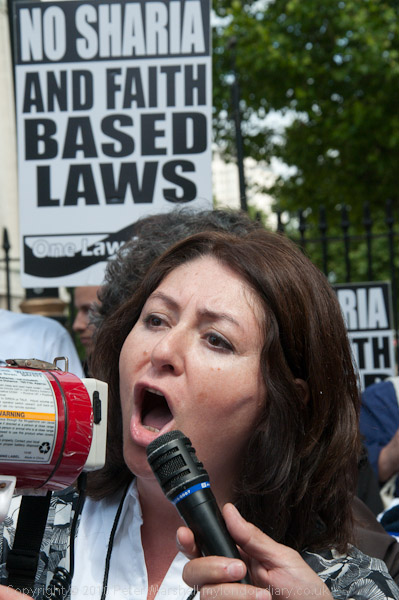
In my 2010 account I quote from Maryam Namazie of One Law for all, writing on the Iran Solidarity blog:
“The battle against Sharia law is a battle against Islamism not Muslims, immigrants and people living under Sharia law here or elsewhere. So it is very apt for the Islamists to hold a counter-demonstration against our rally. This is where the real battleground lies. Anyone wanting to defend universal rights, secularism and a life worthy of the 21st century must join us now in order to push back the Islamists as well as fringe far Right groups like the English Defence League and the British National Party that aims to scapegoat and blame many of our citizens for Islamism.”
My London Diary
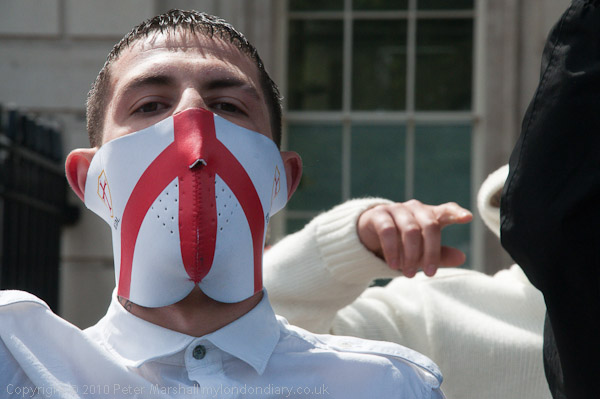
During the rally police escorted a small group of EDL supporters along Whitehall to opposite the Muslim protesters where they shouted insults and threat at both them and the photographers who went to take their pictures. After a few minutes they were led away to a penned protest area further south of the One Law For All rally.
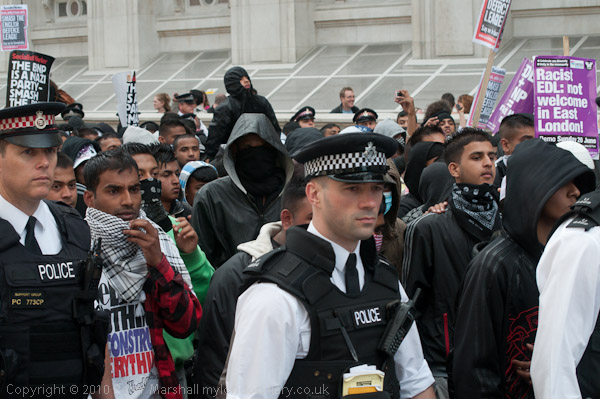
A second much larger group were then brought down Whitehall, much more carefully surrounded by police, making them hard to photograph. Some carried Unite Against Fascism placards and most of the several hundred were young British Asians. Earlier the UAF and United East End had marched frpm Stepney Green to a rally at Whitechapel against the EDL and this group had marched to confront them in Westminster. But by the time they arrived the One Law for All rally had ended and the Muslims Against the Crusades had left.
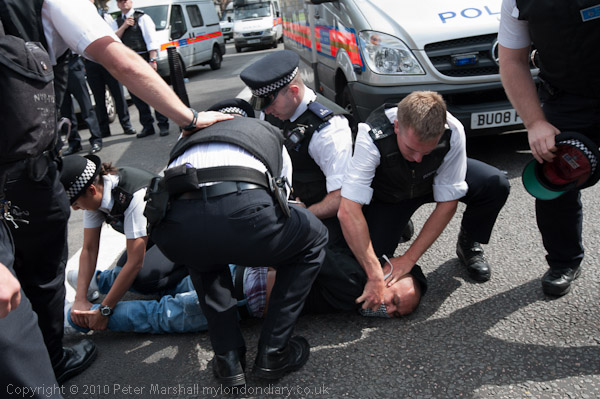
After some minutes photographing the young Asians, including one man being rather forcefully arrested, mainly having to work over the heads or between their police escorts, I rushed after the One Law For All marchers to take more pictures.
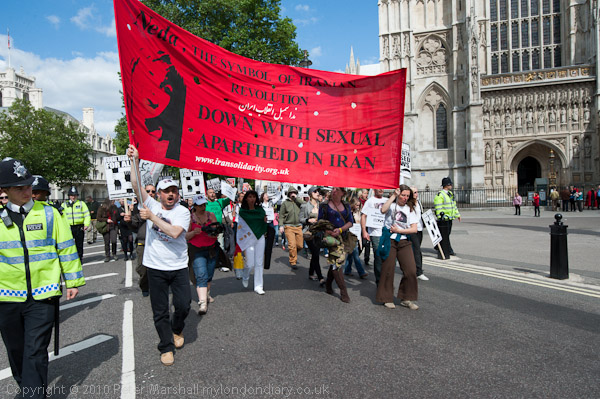
I didn’t make it to the Iranian embassy. By the time the march was passing Victoria Station I decided I was tired and had taken enough pictures and got on a train to begin my journey home.
I wrote about this and posted pictures of the One Law for All campaigners at No Sharia – One Law For All but separated out the photographs of the other protesters into posts at Muslim Crusaders For Sharia, EDL Oppose Muslims Against Crusades amd UAF Arrive to Oppose EDL
